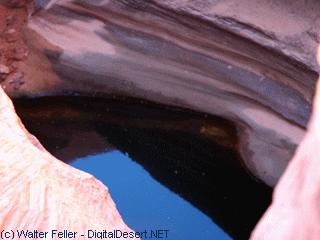Nevada History: XXVII
SOME NEVADA TRAGEDIES
From James G. Scrugham, Nevada: The Narrative of the Conquest of a Frontier Land (1935), vol. I
The Story of Mouse
One of the wildest frontier lands left in the United States is embraced in the southern tip of the State of Nevada, between the confluence of the Virgin and Colorado rivers and the site of the great Boulder dam project construction.
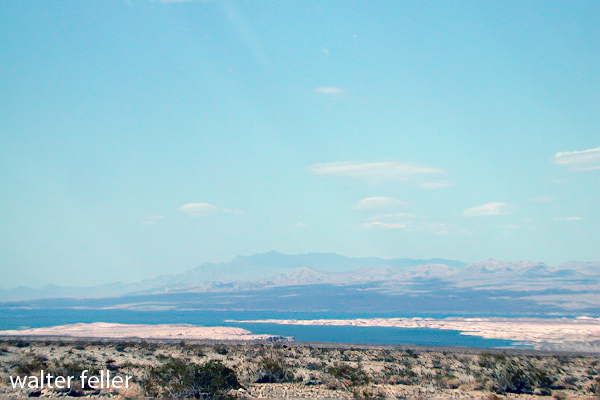
Some thirty-five years ago (123 years in 2023), this area was the scene of one of the most remarkable man hunts ever taking place within the state’s confines. This thrilling drama’s chief actors were eight: three Pahute Indians and five white men.
The leading character was an Indian named “Mouse” by his fellow tribesmen, of his habit of hiding out in the brush and his sly and silent movements. Although of a retiring and surly disposition, he was a good worker and possessed a crafty and intelligent mind.
The next character in importance and interest was one “Red Eye,” the most skilled Indian tracker of his tribe. He derived his name from bloodshot flecks which were always visible in the whites of his eyes, and was well-liked by the white men on account of his loyalty and industry as a ranch hand.
The third Indian character was a fierce old Indian woman who proved to be the Nemesis of the story, stirred to heroic action by the theft of a large and much-prized cabbage from her garden.
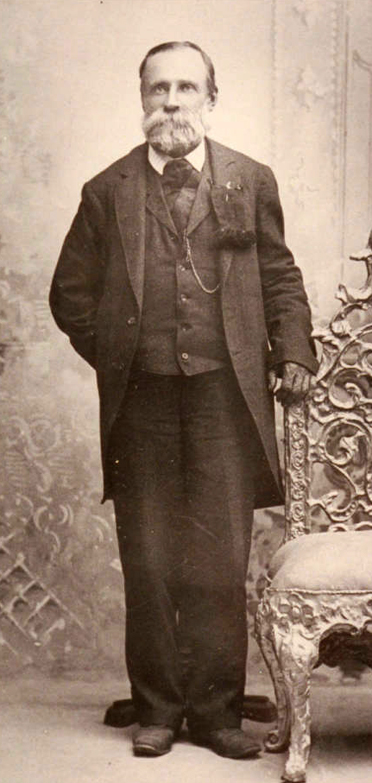
Of the white actors, the most important was Daniel Bonelli, a famous pioneer settler of the early days. He conducted a hay and vegetable ranch near the junction of the Virgin and Colorado Rivers. Also, he operated a ferry over the latter stream connecting with the main trail south through Arizona. He employed a large number of white men and Indians to assist in his livestock, farming, and ferrying enterprises, among whom was a strong, fearless cowpuncher named George Sherwood, who later appears prominently in the story.
Other white men who figured notably in the tragedy were two young prospectors, Davis and Stearns, who were searching for placer gold on the bars of the Colorado River. These men were accompanied by an elderly prospector k, Majorreenowalt, whose chief function was to serve as camp tender.
The story begins at Bonelli’s ranch on the Colorado River. The place was then on the main line of travel between Oregon, Idaho, Utah, and the rich mining camps of Pioche and Delamar on the north to points in Arizona, Mexico, and elsewhere in the south. A continual stream of travelers passed, many of whom were fugitives from justice-seeking oblivion in distant, isolated places.
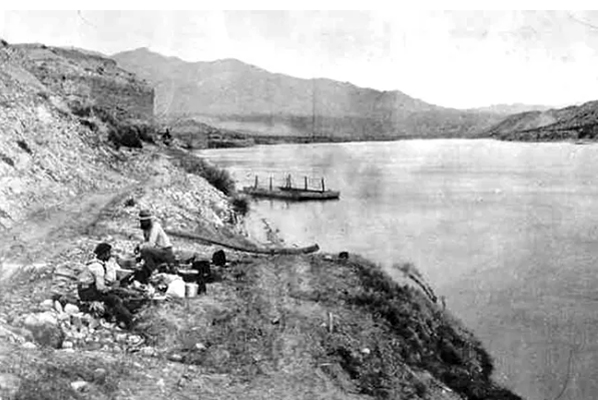
Others were nomads seeking the warmth of southern climes in winter and the coolness of the highlands of the north in the summer. In addition to revenues derived from his voyage over the Colorado and sale of hay and supplies to passersby, Bonelli also made extensive trade in meat and produce with the flourishing mining camps at El Dorado Canyon, Chloride, Gold Basin, and a score of other places.
In the operation of his ranch, Bonelli employed several Indian hands, including Mouse and Red Eye.
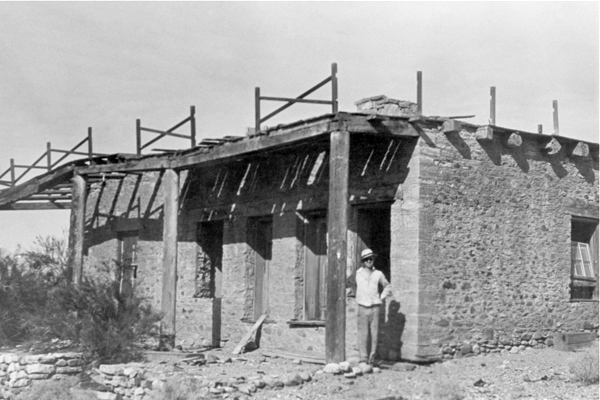
On a spring evening in 1896, when the story begins, the Indian Mouse somehow secured a quantity of whisky that he drank. Under the alcoholic stimulant, his naturally vicious disposition had no restraint, and Mouse started a promiscuous shooting at the other Indians in the camp. They fled to the main ranch and informed Bonelli that Mouse was on a killing rampage, and their lives had only been saved by the bad aim of the drunken aggressor.
Bonelli and some of his ranch hands then went to the Indian camp and disarmed the crazed Mouse, locking him in an adobe outhouse for the night. The next morning the Indian had become sober and appeared entirely docile. However, Bonelli, knowing the disposition of Mouse, gave him his discharge and ferried him over to the Arizona side; after returning to the man, his gun and ammunition were taken away the previous evening.

From Bonelli’s Ferry, the Indian went to a mining camp called White Hills and worked a few days cutting Joshua trees for fuel. Becoming tired of the labor, he stole a horse and set out for one of his old haunts at Indian Springs, some eighty miles away at the foot of the Charleston Mountains.
Mouse attempted to cross the Colorado River back to Nevada at a point opposite the old trail up the Las Vegas Wash, evidently intending to obtain food supplies at the Las Vegas ranch en route to his destination.
Just before he reached the Nevada shore, his horse became so deeply mired in the quicksands that he could not be extricated. Mouse was compelled to leave the struggling animal, and he made his way up the river toward a prospector’s camp, which he sighted on the Arizona shore. This camp was occupied at the time by the three men mentioned above, Davis, Stearns, and Major Greenowalt, who were prospecting for placer gold in the river bars. They had a small boat which they used for the purpose and accommodatingly crossed the river to meet the Indian when he signaled to them.
After being fed by the prospectors, who were obviously tenderfeet in the country, the crafty Mouse aroused their interest by relating the story of a fictitious ledge of gold-bearing quartz, which he claimed to have discovered in an almost inaccessible canyon, some ten miles back from the camp.
Early the following day, accompanied by Davis and Stearns, the Indian started for the scene of the alleged find, Greenowalt remaining at the river location. Davis and Stearns were never again seen alive.
The next morning the scene of the story shifts back to the Bonelli ranch, some twenty miles further up the river from the prospectors’ camp.
Among the horses on the place were two handsome gray geldings, half-brothers five and six years old, which Bonelli had bought from a band of well-bred horses being driven from northern Nevada to the Arizona market. These animals were the best in the place, but one was a much better saddle horse than the other, owing to a more tractable disposition.
During the time Mouse worked on the ranch, he was familiar with the horses and their characteristics. On the morning in question, when the ranch hands went into the fields to harness the stock, the best gray horse was found to be missing. This caused no particular excitement until it was found that his bridle was also gone.
Speedily circling the fields in search of tracks, the buckaroos discovered where the lost horse had been led out toward the Virgin River by a man wearing leather boots, who mounted at the bank before plunging into the stream. A hasty inspection of the shorelines revealed no place where the rider could have come out from the river. A general alarm was sounded, and all hands set out to find the trail of the thief. After a couple of hours’ delay, the outcoming tracks were finally located on the opposite side, more than a half mile above where the stolen animal had entered the water. The extraordinary effort made to throw pursuers off the track indicated that the horse stealer was a person of some skill and experience who had gained a probable ten or twelve-hour start on possible pursuers. However, Bonelli acted promptly. He armed two of his best riders with Winchester rifles and instructed them to stay with the trail until they recovered the horse or killed the thief.
The pursuing posse followed the tracks up the sandy shores of the Rio Virgin until they reached the Bitter Springs Wash, the drainage channel for a great range of territory to the west of the Virgin.
At the head of this wash are springs of bitter waters that will support life, although hardly palatable enough for human consumption. Here the crafty Mouse, for he was the thief, left the bottom of the wash where trailing was easy and took to the dolomitic limestone banks where vegetation and the soft ground were scanty, and no imprints were made. However, the very hardness of the ground defeated the purpose of the Indian thief. The rough limestone caused the horse’s hoofs to bleed, leaving a plain track for the pursuers to follow.
All through the long afternoon and in the moonlit evening, the Bonelli buckaroos followed the trail. About ten o’clock at night, while going over a steep declivity covered with loose lime shale, one of the horses missed his footing and started both riders and their steeds to slide into the precipitous gulch below. When the descent was stopped, both horsemen were so exhausted from the efforts of the day that they dismounted and unsaddled their animals, leaving their bridles on.
Both men wrapped themselves in their saddle blankets and took turns sleeping through the remainder of the night. On the following morning, they were up at the first peep of dawn, ready to resume the trail. However, it was found that the horse who had missed his footing was so badly bruised and cut that he could hardly walk, and the trailers decided to go back to the Bonelli ranch for reinforcements.
On arriving home early in the afternoon and reporting their adventures, the master of the ranch immediately detailed George Sherwood, his ranch foreman, and Red Eye, the skilled Indian tracker, to follow the thief to the end. From the information available, Sherwood and Red Eye decided that the horse thief was heading for the Las Vegas ranch, seventy-five miles away, as that was the nearest food and water available.
Pushing their horses to the utmost, the trailers arrived at their destination the second evening after leaving the Bonelli ranch. Then it was found that the Indian Mouse had arrived the night before on foot, wearing leather boots, with a story of having killed his crippled horse in the Muddy range at a point near where the first pair of pursuers had lost the bloody trail the day before.
It then became obvious that Mouse was the thief and that the lost horse was dead; otherwise, he would have been brought in for water. As further evidence of the guilt of the Indian, he had silently slipped away in the night soon after the ranchmen fed him, and his tracks indicated that he had made directly for the rugged fastnesses of the Charleston Mountains, some thirty miles away.
A successful pursuit was impossible, so after two days’ rest, Sherwood and Red Eye started on their return to the Bonelli place to inform their employer of the identity of the criminal. Arriving at the foot of the Las Vegas Wash, where Mouse had lost his first stolen horse in the quicksands of the Colorado River a few days before, Sherwood and his companion saw a flock of buzzards circling around and eating the remains of the animal, which projected from the quicksand.
As night was approaching, they rode up the river to a point opposite the prospectors’ camp.
Here Major Greenowalt rowed over and informed them that his partners had left five days before with an Indian named Mouse, who was to show them the location of a rich gold ledge. The Major was greatly disturbed by the protracted absence of his companions, as they had only carried food and water for a one-day trip.
On hearing the Major’s story, both Sherwood and Red Eye became apprehensive that the surly Mouse, with whom they were well acquainted, had added murder to his crime of horse theft.
The next morning they rode back to the home ranch and reported their information and suspicions to Mr. Bonelli.
The aroused ranch owner immediately organized a posse that went down the river to seek the missing men. Again the indomitable Red Eye took up the trail over rough and hard ground.
After two days of tedious tracking, Red Eye finally led the posse to the foot of a steep declivity where the mutilated bodies of Davis and Stearns were discovered. The boots had been removed from the feet of Stearns, accounting for the boot tracks made by Mouse when he had stolen the gray gelding at the Bonelli ranch.
Reconstructing the tragedy, Mouse appeared to have taken the lead until he enticed the two prospectors to the lonely place where the bodies were found. There he suddenly turned and vented his blood lust against the white race by shooting both Davis and Stearns.
The bodies of the unfortunate gold seekers were carried down to the river, then transported 100 miles in skiffs to Needles, California, from whence the remains were shipped back to relatives in the East.
With his dastardly acts fully revealed, Mouse became a hunted outcast, to be killed on sight. Even his tribal compatriots were in terror of him and sought his extermination as a crazed killer.
For two years, the murderer remained at large, living on seeds, nuts, and rodents and making an occasional raid on a prospectors camp for flour, bacon, and beans. There was found evidence of where Mouse had killed a wild mustang at a water hole and made jerky of the meat.
Finally, there came an end to this bold and much-feared outlaw. In the course of his wanderings, he came to a mountain overlooking a narrow valley where some of his fellow tribesmen had a little truck garden by a water hole. He descended in the night and stole some corn and cabbage to assuage his hunger.
This act led to his undoing. The cabbage belonged to an astute old squaw, who picked up the trail and followed it enough to identify it as belonging to Mouse from certain peculiarities of gait with which she was familiar.
Returning to the camp, the old squaw set up a hue and cry, which brought about the speedy organization of a well-armed posse to endeavor to capture the murderer. Red Eye, the tracker, led the hot pursuit. Day and night continued the chase through the flaming red sandstones of the Valley of Fire, then up the Meadow Valley Wash to Cave Springs and back again toward the Muddy River.
Bonelli had relays of men to provide food and water for the pursuers, as he was determined that the miscreant should not again escape.
The track was lost and found, then lost and found again. Mouse used every concealment art, but the tireless Red Eye never gave up the trail.
After nearly two weeks of hide and seek, the posse cornered Mouse early one morning at a lonely water hole on a gypsum flat near the Muddy River. Here the outlaw made his last stand.
Cursing and screaming, Mouse exchanged shot for shot with his pursuers. However, his pistols were no match for the high-powered rifles of the posse. The savage murderer finally fell, with his body literally riddled with bullets. Thus was avenged the deaths of Davis and Stearns, and the whole countryside felt relief from the sinister shadow of the Indian Mouse.
END
